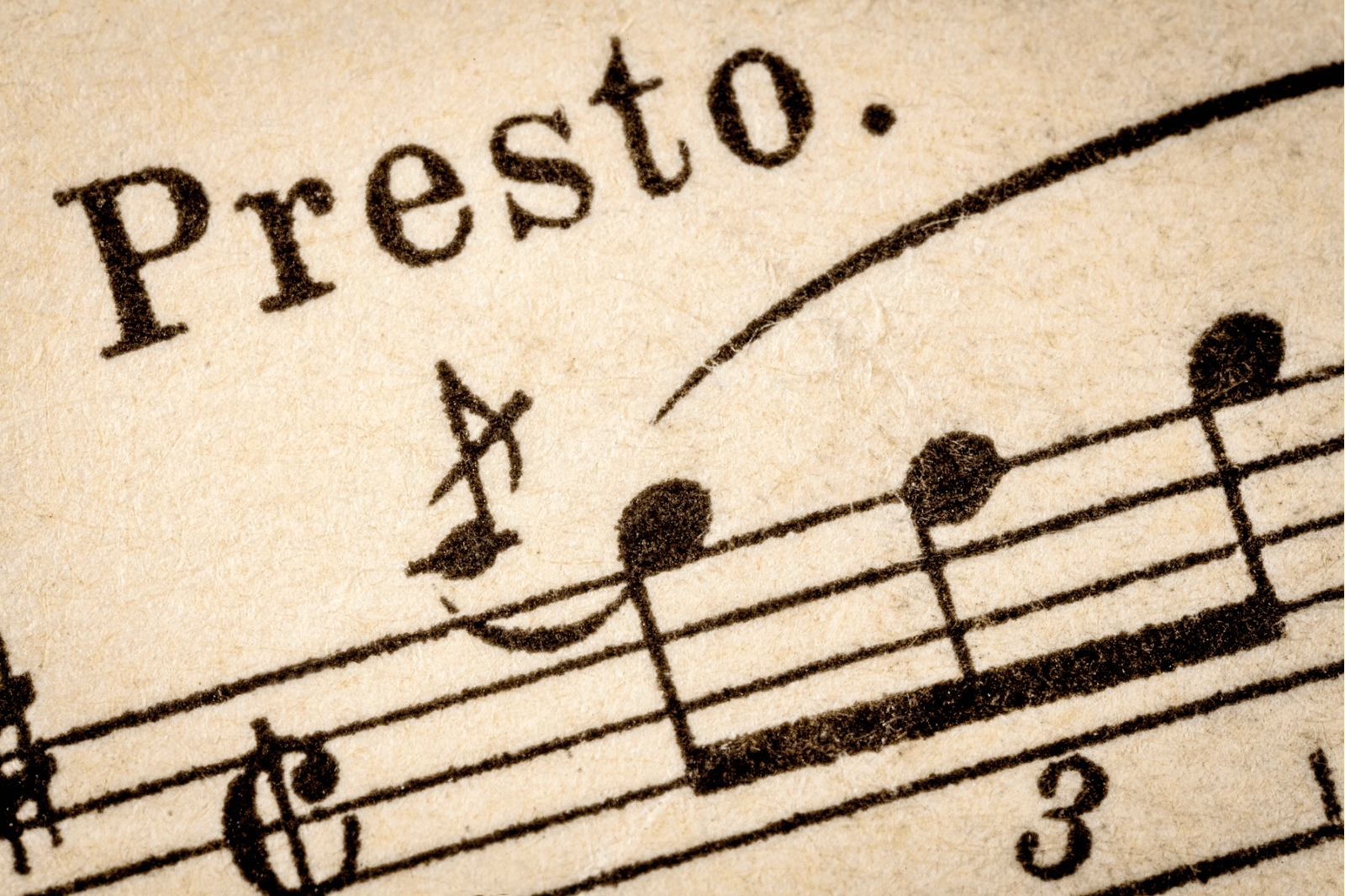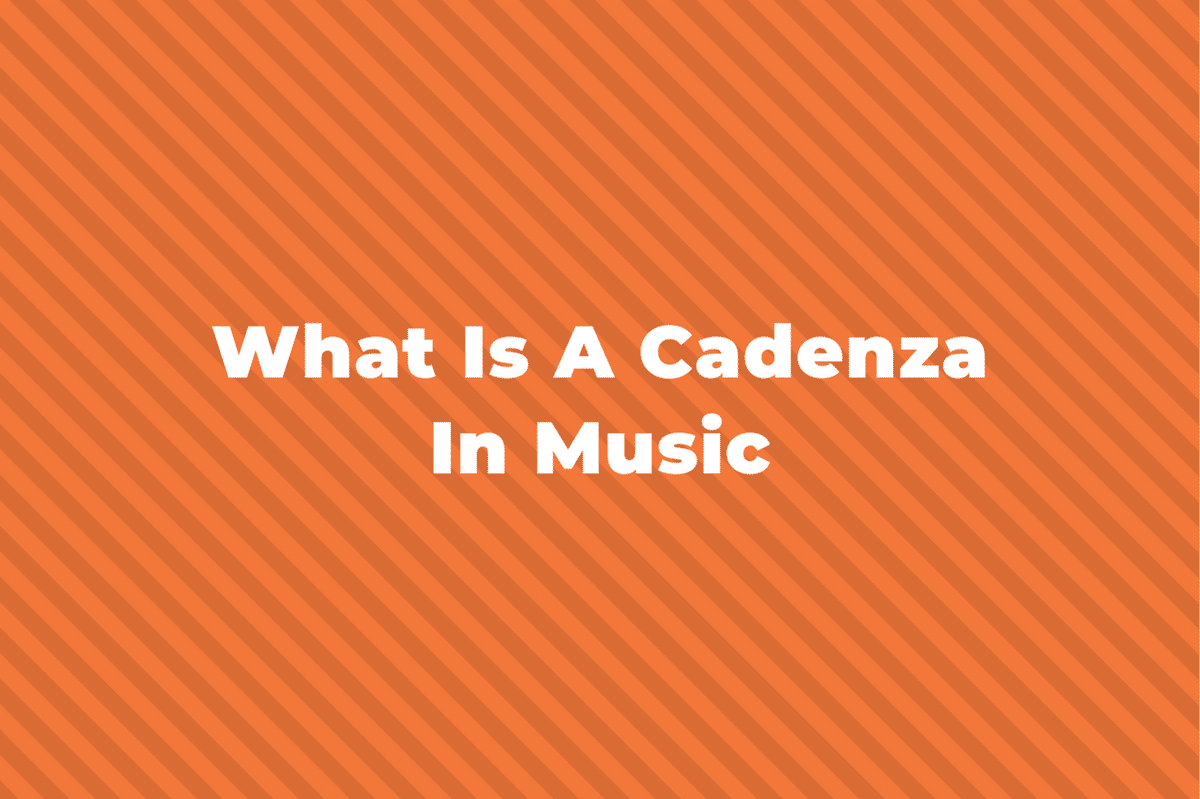If you have ever analyzed a chord progression from a piece of music, you might have come across a chord that acts as a secondary dominant, which is one of the ways we can make music more interesting and add tension and release to a chord progression.
This article will go over exactly what a secondary dominant is in music. However, this knowledge is dependent on us knowing what a dominant chord is in the first place so we’ll start there.
What is a Dominant Chord?
A dominant chord is a specific type of seventh chord, and a seventh chord is simply a triad chord that adds the seventh note in the scale.
For example, if we are in C major, the scale would be C – D – E – F – G – A – B – C.
A triad takes the first, third, and fifth note and creates a chord from these, and a seventh chord adds the seventh note in the scale, so a CMaj7 (C major seventh) chord would be C-E-G-B:

But, a dominant chord has one difference to a major seventh chord.
In a dominant chord, the seventh is one semitone (or half-step) lower than it is in the major seventh chord.
So a C dominant chord would be C – E – G – Bb.

Another way you can think of a dominant chord is that it is the chord built from the fifth scale degree (V) of another scale.
For example, the V note in the scale above is G.
So if we build a seventh chord starting on the G, but still using the same notes we see in the C scale.
That would give us the notes G – B – D – F, which are exactly the notes of a G dominant chord.
For dominant chords, we can shorten the chord symbol to just the letter of the chord and the number 7, so a G dominant seventh chord would be: G7.
Dominant and Tonic
This brings us to the idea of harmonic function in music, which is the concept that certain chords have specific functions in a chord progression or a piece of music.
A chord that is the same as the “key” the music is in is called the tonic.
The tonic is the chord built from the first note of the scale, like if a song was “in the key of D major”, it would choose its notes from a D major scale and the chord built from the D would be the tonic.
As we covered already, the chord built on the fifth note of the scale is called the dominant chord.

The first chord on the left is the C major 7 chord.
If that is the tonic, then the chord built on the fifth scale degree (G) would be the dominant chord.
The notes would be G – B – D – F, because it takes notes from the “key of C” to create the G7 chord.
Chords that are called dominant almost always resolve to a tonic chord – in other words, if you see a dominant chord, it is almost always followed by a tonic chord.
G7 ⇨ CMaj7, for example, or A7 ⇨ DMaj7.
What are Secondary Dominant Chords?
Now that we know how dominant and tonic chords work, and how they relate to each other, we can understand the concept behind secondary dominants.
A secondary dominant is a dominant chord that does not resolve, but instead resolves to a chord built from a different tone.
Let’s take that D major scale from above as an example: D – E – F# – G – A – B – C# – D.
The main tonic chord for this scale is the D Maj chord (D – F# – A), and the main dominant chord is the A7 chord (A – C# – E – G).
The A7 would then resolve to D Maj in a chord progression.
However, what if we had an E7 chord, or an F#7 chord, in a chord progression built in the key of D major?
Because these are not an A7 chord, they wouldn’t resolve to a D Maj.

But they do have to resolve to a chord, because dominant seventh chords are made to resolve.
And they resolve how regular dominant chords would – to their “tonic”.
If we had an E7 as a dominant chord, what would its “tonic” chord be?
Well, E is the fifth note (V) of the scale of A major or A minor, so it could resolve from E7 ⇨ A major or E7 ⇨ A minor.
Starting with an F#7, the note F# is the fifth note of a B major or B minor scale, so that could resolve F#7 ⇨ B minor or F#7 ⇨ B major.
How Secondary Dominants are Used in Music
The main reason a secondary dominant is used in a song or a chord progression is to “tonicize” a chord that is different from the main tonic chord.
This is all part of the musical concept of “tension and release”, which is a foundation of harmonic function.
A dominant chord has a lot of tension inherent within it, because it has a tritone in the chord.
A tritone is a very dissonant interval that causes much of the tension found in music, and the “release” is when the tritone then changes to another, more stable interval, like a major third.

In this picture, the Bb7 has a tritone in it, the interval Ab-D.
This interval then releases to the interval of G-Eb, which is part of an Eb major chord.
This tension and release occurs whenever a dominant chord is followed by a tonic chord.
What a secondary dominant does is that it creates another tonic chord after it, creating tension and release in a different place in the song than it normally would be.
As an example, let’s take the song “Yesterday” by The Beatles:
The song is in the key of F major, but the chord progression goes F ⇨ Em7 ⇨ A7 ⇨ Dm.
This tonicizes the D minor chord for a beat, before returning to the tonic of F Maj:

If a tonicization created by a secondary dominant lasts for more than a few chords or a measure, then it is called a modulation.
Examples
The most common use of a secondary dominant is to provide a “dominant of the dominant” of the original tonic key.
Therefore, in C Maj, because G7 is the dominant, then the most common secondary dominant in C Maj would be a D7 that leads ⇨ G.
The dominant of a dominant often happens at the end of a line or verse.
It is found in many hymns and old religious music.
Here is an example, the song “Holy Holy Holy”.
Listen for the dominant to the dominant around 0:35, during the lyrics “Soul will rise to thee”:
Another more contemporary example is “Don’t think Twice, It’s Alright” by Bob Dylan.
Listen for the secondary dominant at 0:22.
Here is a secondary dominant in Mozart’s “Fantasia No. 4 in C Minor”.
This one, however, tonicizes the II chord.
You can also have multiple secondary dominants in a row.
This is often called a ragtime progression, because it was used a lot in early ragtime music.
Listen to the guitar picking in “Alice’s Restaurant” by Arlo Guthrie for a good example of the ragtime progression:
A progression of secondary dominants in a row follows the circle of fifths.
An example would be E7 ⇨ A7 ⇨ D7 ⇨ G7 ⇨ C Maj.
Conclusion
We hope you were able to learn everything you needed to about secondary dominants.
Its function is in the name, because it is a secondary dominant that tonicizes a secondary tonic, or one different from the normal tonic of the key.



